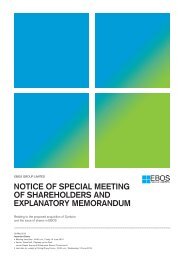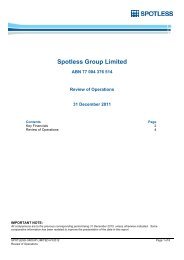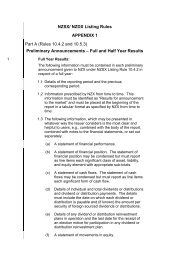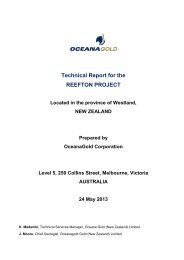Westpac Group Pillar 3 Report March 2013 - Iguana IR Sites
Westpac Group Pillar 3 Report March 2013 - Iguana IR Sites
Westpac Group Pillar 3 Report March 2013 - Iguana IR Sites
Create successful ePaper yourself
Turn your PDF publications into a flip-book with our unique Google optimized e-Paper software.
PILLAR 3 REPORT<br />
CREDIT RISK MANAGEMENT<br />
Mapping of Credit risk approach to Basel categories and exposure types<br />
Approach APS asset class Types of exposures<br />
Transaction-Managed<br />
Corporate<br />
Direct lending<br />
Portfolios<br />
Sovereign<br />
Contingent lending<br />
Bank<br />
Derivative counterparty<br />
Asset warehousing<br />
Underwriting<br />
Secondary market trading<br />
Foreign exchange settlement<br />
Other intra-day settlement<br />
obligations<br />
Program-Managed<br />
Portfolios<br />
Residential mortgage<br />
Qualifying revolving retail<br />
Other retail<br />
Mortgages<br />
Equity access loans<br />
Australian credit cards<br />
Personal loans<br />
Overdrafts<br />
New Zealand credit cards<br />
Auto and equipment finance<br />
Business development loans<br />
Business overdrafts<br />
Other term products<br />
Internal ratings process for transaction-managed portfolios<br />
The process for assigning and approving individual customer PDs and facility LGDs involves:<br />
Business unit representatives recommend the CRG and facility LGDs under the guidance of criteria set out in<br />
established credit policies. Each CRG is associated with an estimated PD;<br />
Authorised officers evaluate the recommendations and approve the final CRG and facility LGDs. Credit officers<br />
may override line business unit recommendations; and<br />
An expert judgement decisioning process is employed to evaluate CRG and the outputs of various risk grading<br />
models are used as one of several inputs into that process.<br />
For on-going exposures to transaction-managed customers, risk grades and facility LGDs are required to be<br />
reviewed at least annually, but also whenever material changes occur.<br />
No material deviations from the reference definition of default are permitted.<br />
Internal ratings process for program-managed portfolios<br />
The process for assigning PDs, LGDs and EADs to the retail portfolio involves dividing the portfolio into a number<br />
of pools per product. These pools are created by analysing the homogeneity of risk characteristics that have<br />
historically proven predictive in determining whether an account is likely to go into default.<br />
No material deviations from the reference definition of default are permitted.<br />
Internal credit risk ratings system<br />
In addition to using the credit risk estimates as the basis for regulatory capital purposes, they are also used for the<br />
purposes described here.<br />
Economic capital - <strong>Westpac</strong> allocates economic capital to all exposures. Economic capital includes both credit<br />
and non-credit components. Economic credit capital is allocated using a framework that considers estimates of<br />
PD, LGD, EAD, total committed exposure and loan tenor, as well as measures of portfolio composition not<br />
reflected in regulatory capital formulae.<br />
21
















